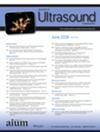Low-Intensity Pulsed Ultrasound Delays the Onset of Osteoporosis and Dyslipidemia in Mice With Premature Ovarian Insufficiency
Abstract
Objectives
The pathogenesis of premature ovarian insufficiency (POI) not only affects the ovarian structure and function but also gives rise to complications such as osteoporosis and dyslipidemia. Although low-intensity pulsed ultrasound (LIPUS) has been proven effective in treating POI, its impact on the associated complications remains unexplored. Therefore, this study aims to investigate the effects of LIPUS irradiation on osteoporosis and dyslipidemia in a mouse model of POI.
Methods
The post-treatment complications following LIPUS cessation were monitored in POI rats at 30 and 120 days in this trial conducted by us. The secretion of follicle-stimulating hormone (FSH) was assessed using enzyme-linked immunosorbent assay (ELISA) at different time points in POI rats. Pathological changes in the liver and femur were observed through HE staining. Blood lipid and bone metabolism indexes were measured via blood biochemical testing. Osteoporosis was evaluated using MicroCT and Masson staining techniques. The expression level of inflammatory factors in bone tissue was detected by Western blot (WB) test.
Results
The serum FSH content showed a significant decrease in the LIPUS group on day 0, day 15, and day 30 (P < .05). On the 30th day following LIPUS treatment, TC, TG, and LDL-C decreased in the LIPUS group while HDL-C increased with no statistically significant differences (P > .05); the indexes of femur parameters (BS/TV, BV/TV, Tb.Th, BMD, and TMD) were increased (P > .05). On the 120th day after LIPUS treatment, TC content demonstrated a significant decrease (P < .05), and TG and LDL-C displayed a downward trend (P > .05) while HDL-C content increased (P < .05); the femur parameters were significantly reduced (P < .05). The LIPUS group exhibited an increased presence of new fibrillar fibers. Levels of IL-6 and IL-1β significantly decreased with LIPUS treatment, whereas osteocalcin (OCN) expression notably increased (P < .05).
Conclusions
The application of LIPUS demonstrates potential in mitigating complications associated with POI in rats through the reduction of FSH secretion levels and inhibition of tissue inflammation, thereby presenting a promising avenue for women with POI to explore more efficacious treatment alternatives.

 求助内容:
求助内容: 应助结果提醒方式:
应助结果提醒方式:


